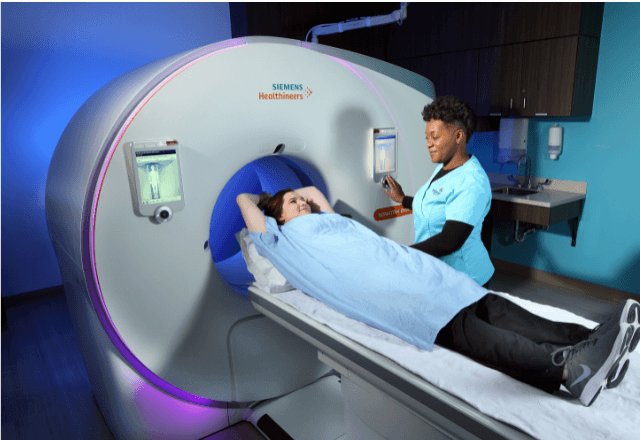Contrast Ultrasound Testing in Veterinary Cardiology
Contrast ultrasound technology has revolutionized diagnostic imaging in veterinary cardiology by providing a safe and effective method to visualize the cardiovascular system. This non-invasive technique uses microbubble contrast agents that enhance the echogenicity of tissues, making it easier for veterinarians to detect subtle changes in heart function.
Contrast ultrasound is particularly useful in evaluating cardiac structures such as the chambers, valves, and vessels. It allows for real-time assessment of blood flow dynamics, which can help identify conditions like valvular regurgitation, stenosis, or pericardial effusion. The technology is especially valuable in small animal practice where traditional imaging methods may not be suitable due to patient size.
The procedure typically involves introducing a saline solution containing microbubble contrast agents into the bloodstream via injection. These bubbles are then visualized as they circulate through the heart and vessels, providing detailed information about blood flow patterns and chamber dimensions. The ultrasound machine captures these images in real-time, allowing for precise measurements and assessments.
The safety profile of contrast ultrasound is excellent, with minimal side effects reported. Patients usually experience little discomfort during the procedure, which can be performed under local anesthesia if necessary. Post-procedure recovery time is short, enabling rapid return to normal activities. This makes it an ideal tool for routine cardiac evaluations and monitoring in veterinary settings.
Contrast ultrasound testing plays a crucial role in diagnosing various cardiovascular diseases in pets, including congenital heart defects, cardiomyopathies, and pericardial effusion. By offering detailed insights into heart function, this technology supports early detection and timely intervention, improving patient outcomes significantly.
In summary, contrast ultrasound is an essential diagnostic tool in veterinary cardiology that provides valuable information about the cardiovascular system. Its non-invasive nature, real-time capabilities, and high-resolution images make it indispensable for comprehensive cardiac evaluations.
Applied Standards
| Standard | Description |
|---|---|
| ISO 15637:2019 | Safety of medical devices – Ultrasound systems for diagnostic imaging |
| ASTM F2488-18 | Standard practice for quality assurance in ultrasound examination of the heart and great vessels using contrast agents |
| IEC 60601-2-35:2017 | Medical electrical equipment – Particular requirements for the safety of medical diagnostic ultrasonic systems |
Benefits
The use of contrast ultrasound in veterinary cardiology offers several advantages over traditional imaging methods. Firstly, it provides real-time visualization of cardiac structures and blood flow dynamics, which is crucial for diagnosing complex cardiovascular conditions early.
Contrast ultrasound allows for precise measurements and detailed assessments without the need for invasive procedures or exposure to ionizing radiation. This makes it particularly suitable for small animals where minimally invasive techniques are preferred. The high-resolution images generated by this technology enable accurate diagnosis, leading to better treatment planning and outcomes.
Another significant benefit is its safety profile. Contrast agents used in this procedure are non-toxic and have minimal side effects, making it an ideal diagnostic tool for routine cardiac evaluations. Additionally, the short recovery time associated with contrast ultrasound ensures that pets can return to their normal activities quickly after the procedure.
The ability to monitor changes over time is another key advantage of contrast ultrasound in veterinary cardiology. It allows veterinarians to track the progression or resolution of cardiovascular conditions accurately, ensuring timely interventions when necessary. This continuous monitoring supports long-term management strategies for chronic heart diseases in pets.
Industry Applications
In veterinary cardiology, contrast ultrasound finds extensive application across various diagnostic scenarios. It is particularly useful in evaluating the heart chambers and valves, assessing blood flow dynamics, and detecting abnormalities such as pericardial effusion or valvular regurgitation.
The technology supports precise measurements of cardiac structures, enabling accurate diagnosis and monitoring of cardiovascular conditions. This real-time imaging capability makes contrast ultrasound an invaluable tool for both routine evaluations and specialized cases requiring detailed assessments.
Contrast ultrasound is also employed in the evaluation of congenital heart defects and cardiomyopathies. By providing high-resolution images, it facilitates early detection and timely intervention, improving patient outcomes significantly. Its non-invasive nature and safety profile make it an essential diagnostic tool for comprehensive cardiac evaluations in small animal practice.
The application of contrast ultrasound extends beyond routine diagnostics to include surgical planning and post-operative monitoring. In these scenarios, the technology provides detailed insights into heart function before and after procedures, ensuring optimal outcomes and reduced recovery times.





